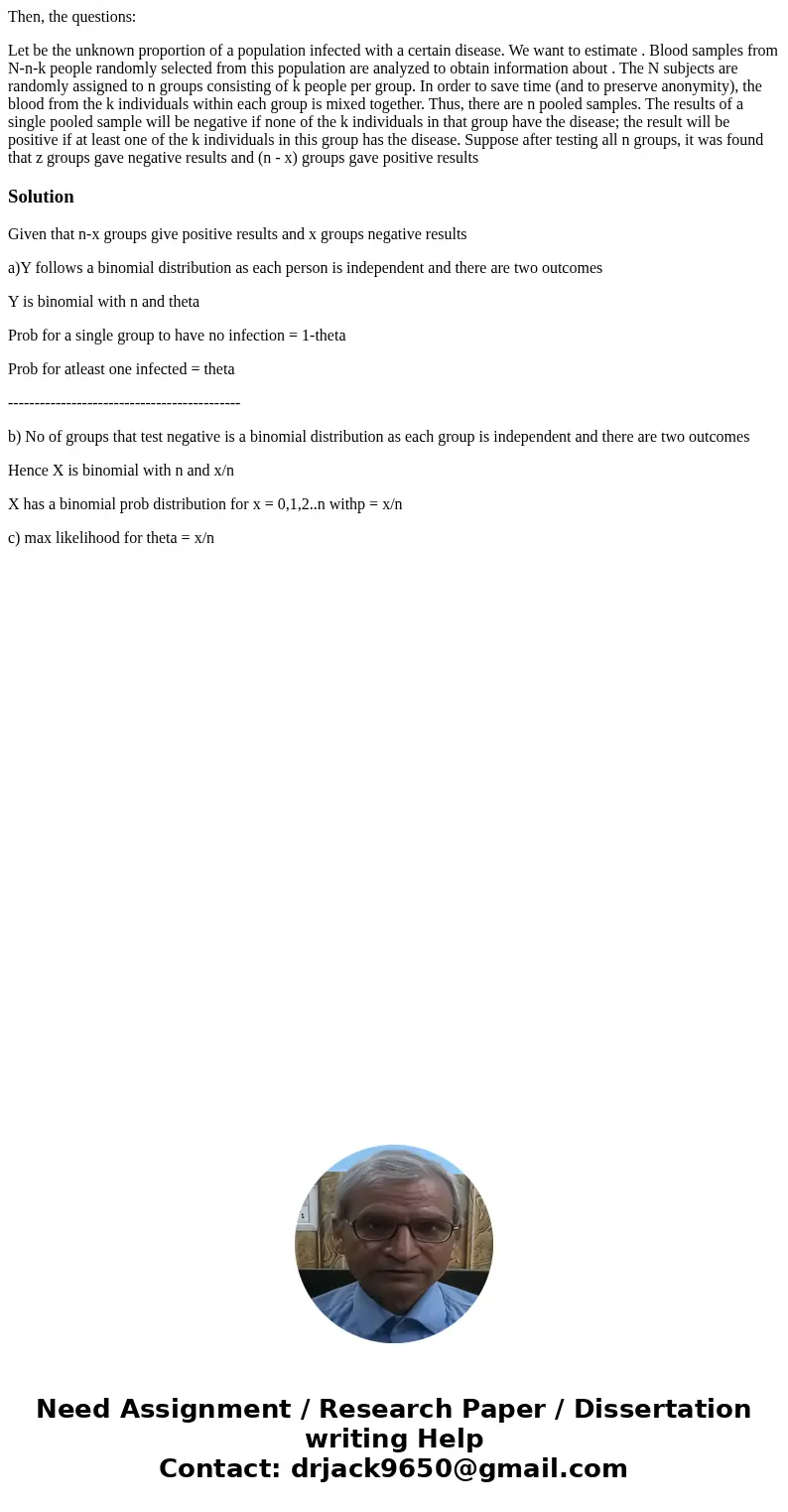Then the questions Let be the unknown proportion of a popula
Then, the questions:
Let be the unknown proportion of a population infected with a certain disease. We want to estimate . Blood samples from N-n-k people randomly selected from this population are analyzed to obtain information about . The N subjects are randomly assigned to n groups consisting of k people per group. In order to save time (and to preserve anonymity), the blood from the k individuals within each group is mixed together. Thus, there are n pooled samples. The results of a single pooled sample will be negative if none of the k individuals in that group have the disease; the result will be positive if at least one of the k individuals in this group has the disease. Suppose after testing all n groups, it was found that z groups gave negative results and (n - x) groups gave positive resultsSolution
Given that n-x groups give positive results and x groups negative results
a)Y follows a binomial distribution as each person is independent and there are two outcomes
Y is binomial with n and theta
Prob for a single group to have no infection = 1-theta
Prob for atleast one infected = theta
--------------------------------------------
b) No of groups that test negative is a binomial distribution as each group is independent and there are two outcomes
Hence X is binomial with n and x/n
X has a binomial prob distribution for x = 0,1,2..n withp = x/n
c) max likelihood for theta = x/n

 Homework Sourse
Homework Sourse